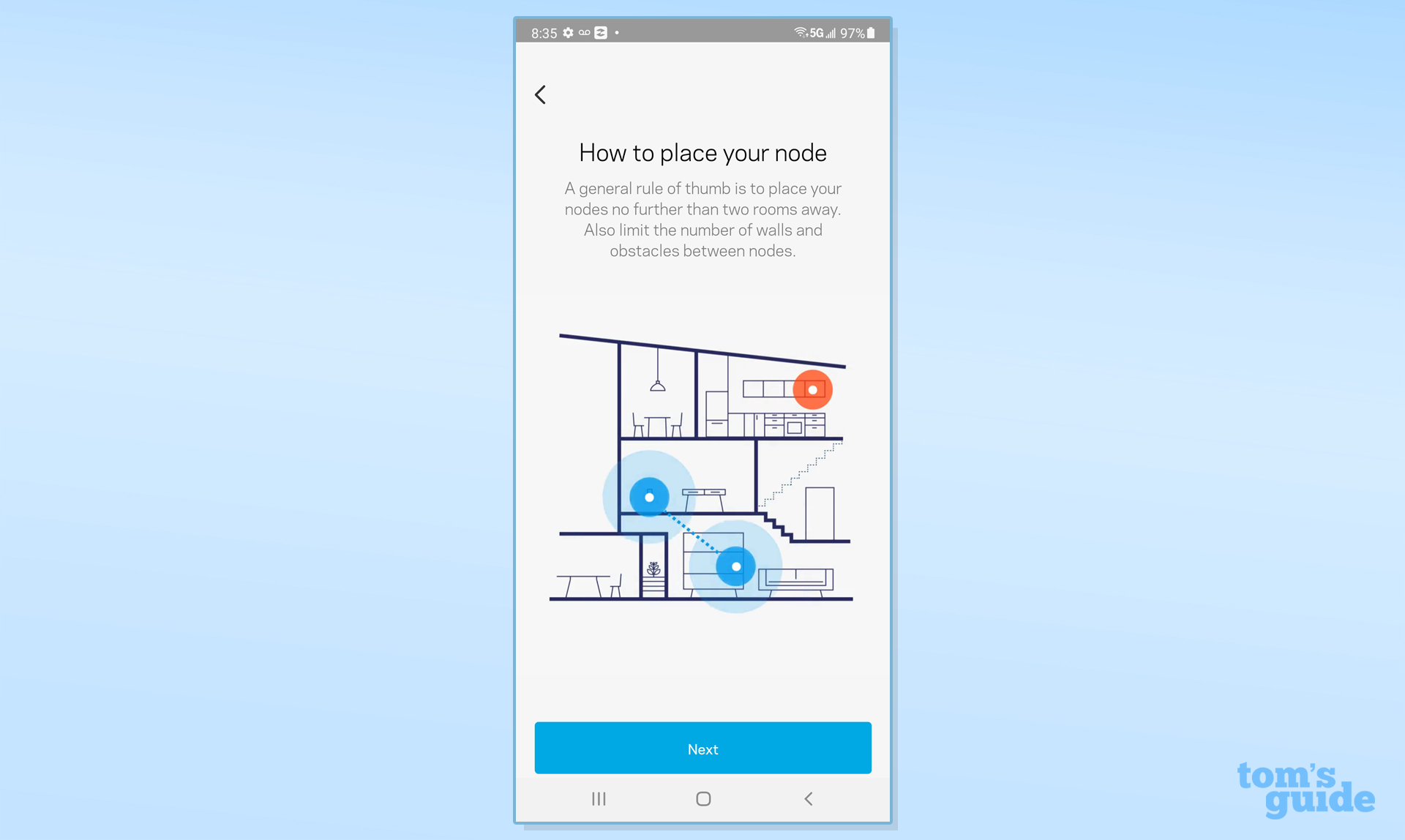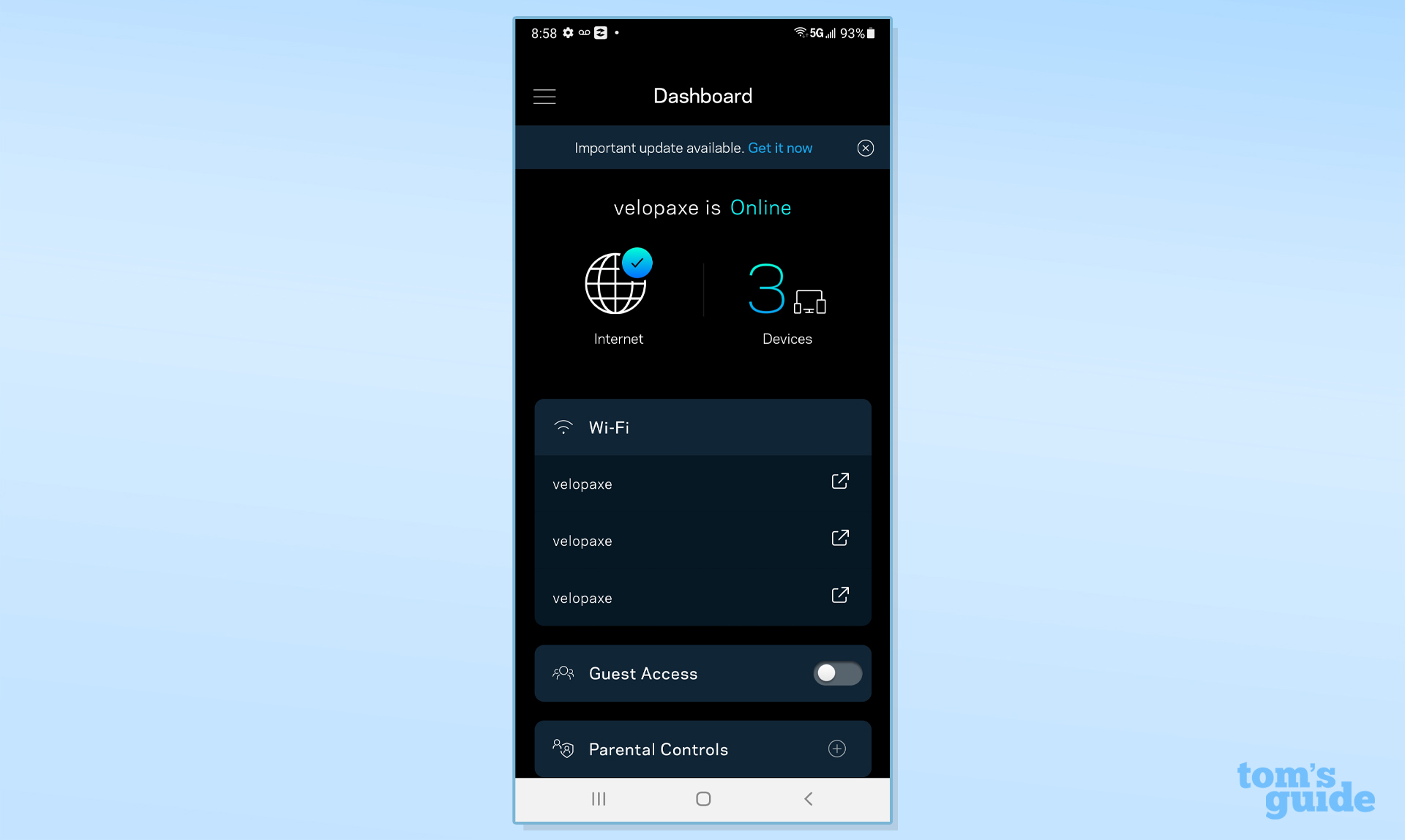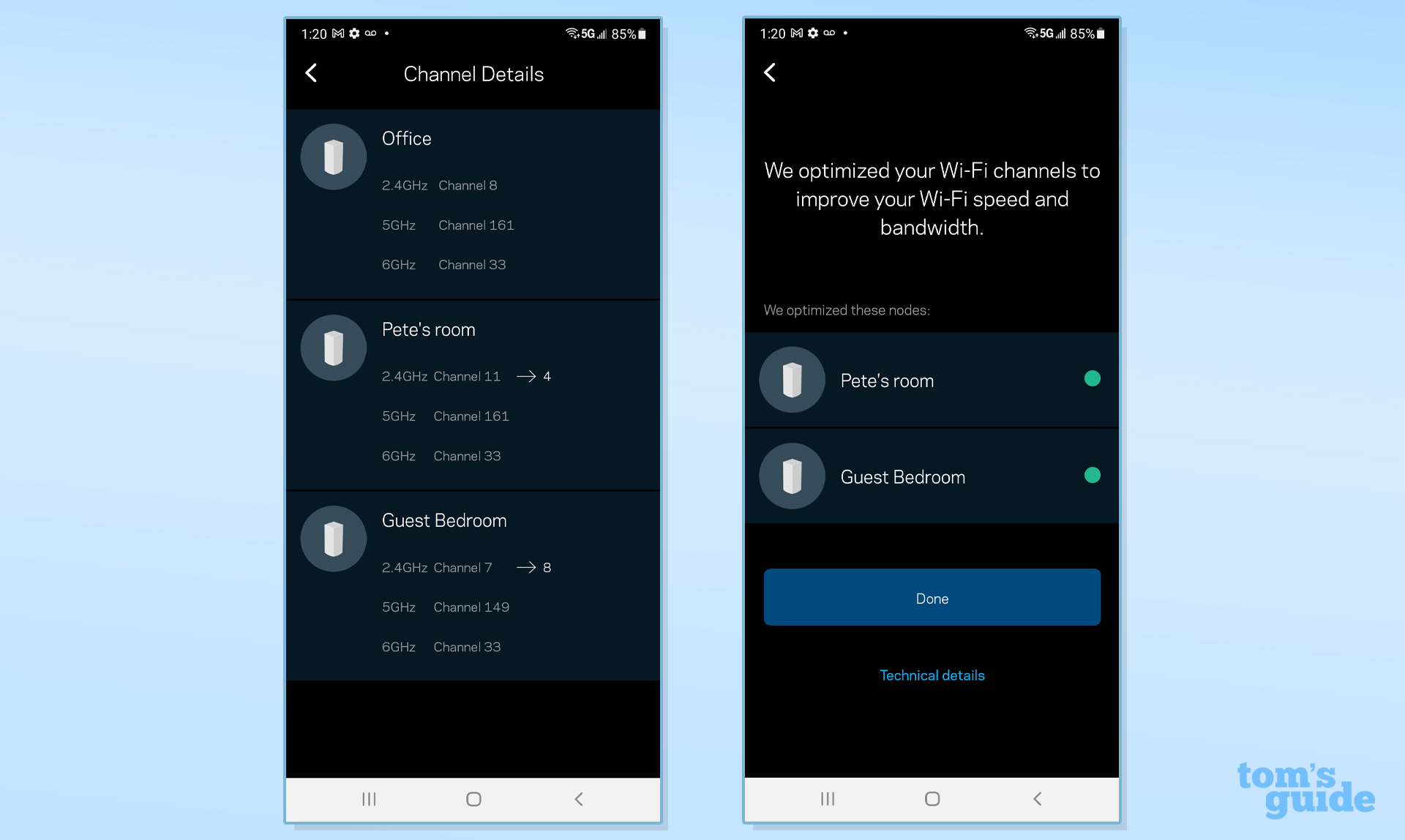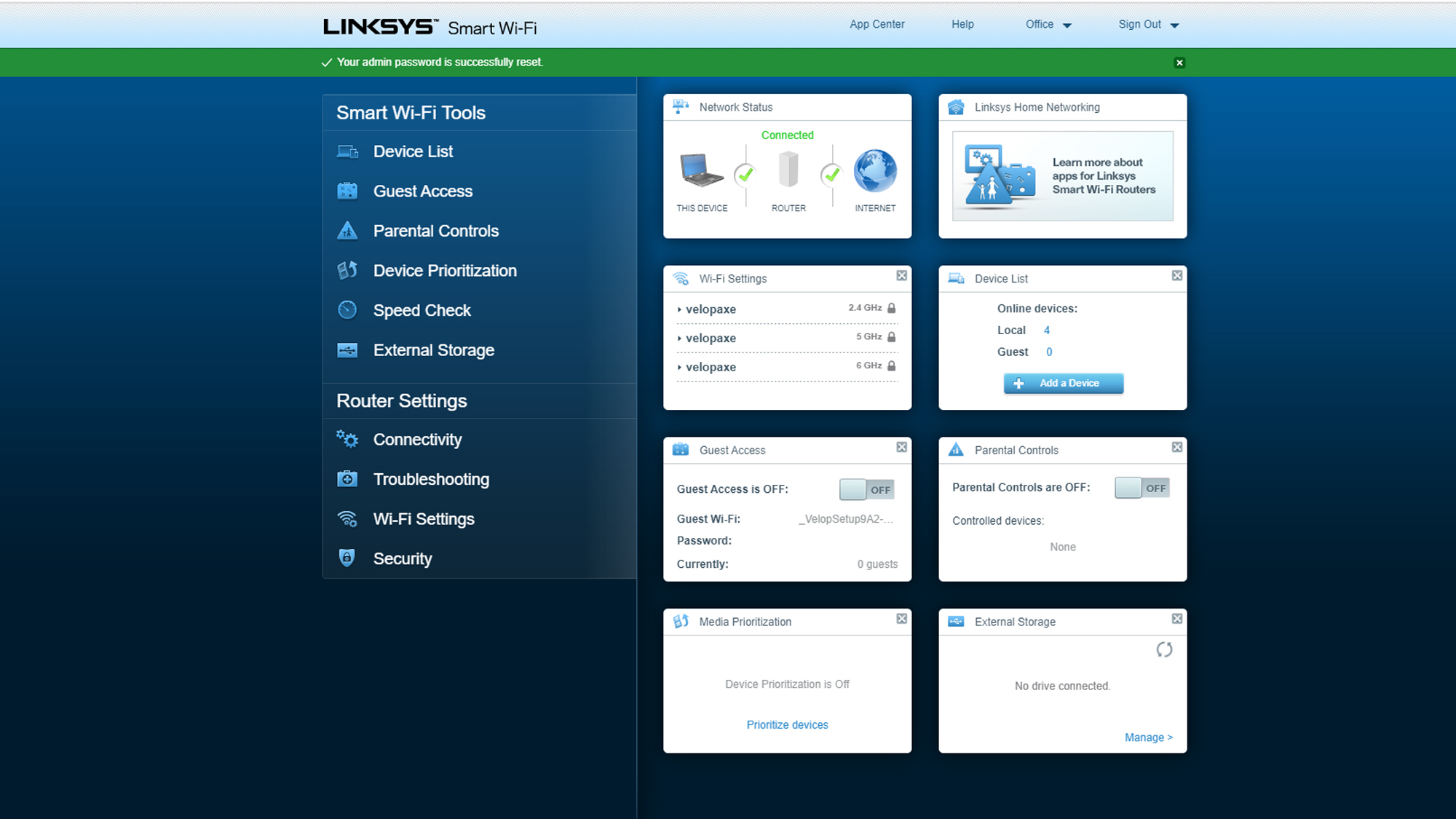Tom's Guide Verdict
By excelling at moving data to nearby computers, the Linksys Atlas Max 6E goes to the head of the Wi-Fi 6E mesh class.
Pros
- +
Great overall performance
- +
Able to push a strong signal through walls
- +
App or online configuration
- +
Three-year warranty
Cons
- -
No added security protection
- -
Large devices
- -
Expensive
Why you can trust Tom's Guide
Wi-Fi specification: AXE8400 (802.11ax, 8.4Gbps throughput)
Number of antennas/removable: 12/No
Router ports: 1 WAN/4 LAN
Satellite ports: 4 LAN, can be used to connect satellite to router with cabling
Processor/memory/storage: Quad-core 2.2GHz/1GB/512MB
Wi-Fi chip: Qualcomm Networking Pro 1210
Peak 802.11ax performance: 1.189 Gbps (at 15 feet)
Maximum range: 95 feet
Size: 9.6 x 4.5 x 4.5 inches
Estimated annual electricity cost: $53 (for router and two satellites)
By using the Wi-Fi 6E spec to its fullest, Linksys Atlas Max 6E pushes mesh networking past its competitors and can easily fill a large house of data. Because it relies on the 6GHz Wi-Fi band, it’s best when the router and clients are close to each other but worked well in older homes with lots of walls, where it outperformed the Netgear Orbi RBKE963.
At $1,000 for the three-piece mesh set, the Atlas Max 6E mesh costs $1,000, underselling the Orbi RBKE963 by $500, but is still out of the reach of most. It lacks any add-on security software to protect itself and its networks, but the Atlas Max 6E’s three-year warranty and lifetime support blows away the competition, making it a luxury that you just might be able to afford. Among the best mesh Wi-Fi routers, it’s a splurge.
Linksys Atlas Max 6E review: Pricing and availability
First available in January 2022, the Linksys Atlas Max 6E costs $1,000 for the three-piece kit I reviewed; that’s a bargain compared to the $1,500 Orbi RBKE963 kit. Able to cover up to 9,000 square feet, according to Linksys engineers, the Wi-Fi 6E mesh three-pack can cover a McMansion.
Linksys also sells two packs of the Atlas Max 6E for $900 that should be able to cover a more modest 6,000 square feet. Finally, you can get a single Atlas Max 6E device for $450 that can add 3,000 square feet of coverage if three devices is not enough.
This is still a lot of money and close to the average mortgage payment in the U.S. Linksys also sells the very capable Wi-Fi 6-based Velop AX4200 mesh kit for an economical $480.
The Linksys Atlas Max 6E includes a three year warranty that is triple the length of what Netgear provides with its Orbi RBKE963. More to the point, Linksys includes lifetime support, while Netgear charges for anything more than 90 days of support.
Linksys Atlas Max 6E review: Design
While they have been redesigned from the ground up, the rectangular Atlas Max 6E towers are immediately recognizable as Linksys mesh products. Unlike Netgear Orbi devices that have grown bigger over the years, Linksys designers held the line on size with 9.6 x 4.5 x 4.5 inch devices — the same as the Velop AX4200 devices and almost 30 percent smaller than the Orbi RBKE963 units. Still, they’re gargantuan compared to the Amazon Eero mesh devices.
Get instant access to breaking news, the hottest reviews, great deals and helpful tips.
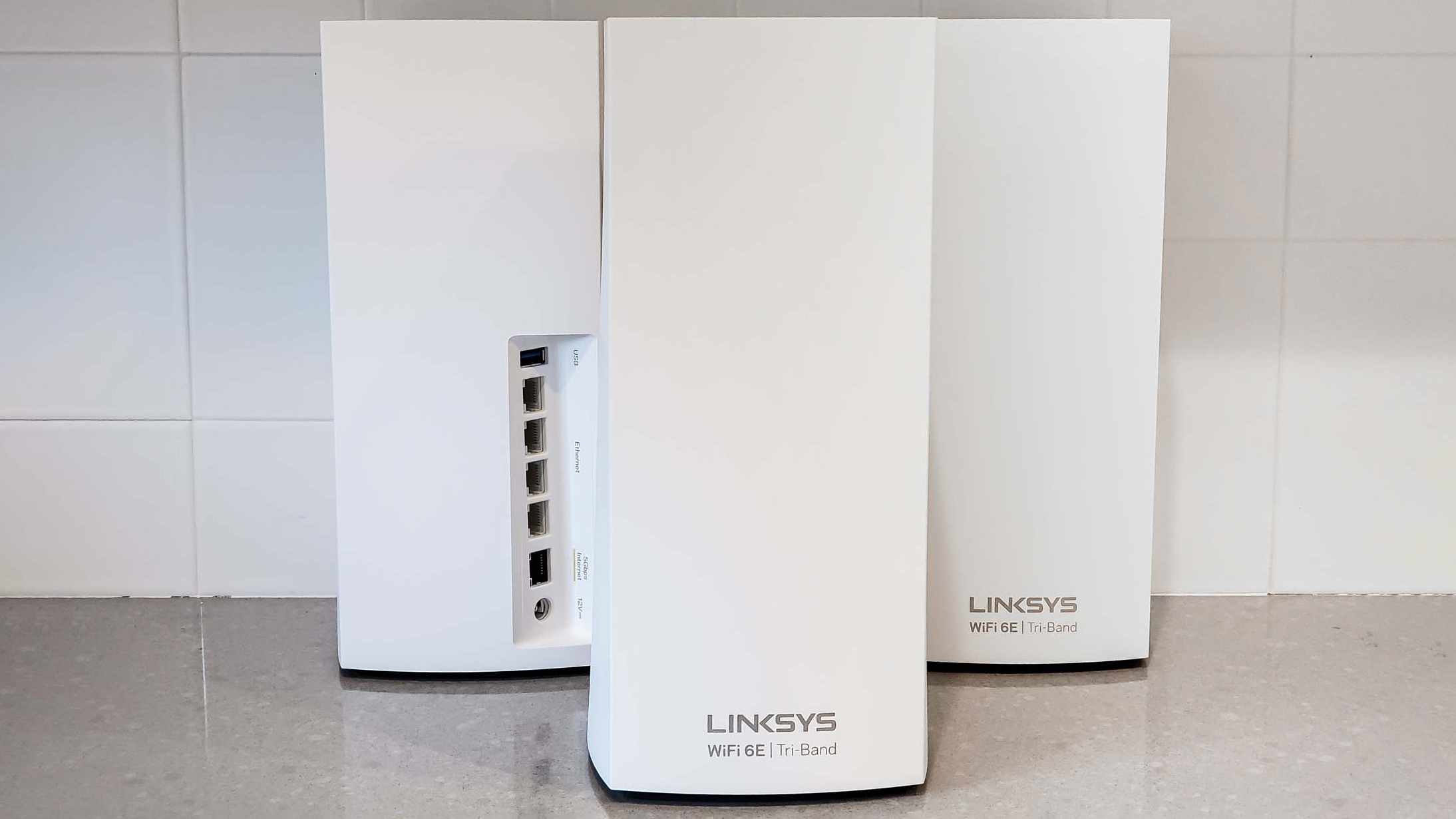
Available only in white, the Atlas Max 6E can easily sit on a bookshelf, desk or even kitchen countertop. Unlike Netgear, Linskys doesn’t sell wall mounting hardware, but there’s a variety of third party brackets available online that typically sell for about $15 each.
Like earlier Linskys mesh designs, there’s a single LED on top to show the network’s status. It blinks purple when setting up and turns blue when it’s online and distributing data. If it blinks red, it needs some attention.

All the Atlas Max 6E devices are the same and can be configured as the host router or satellite during setup; by contrast, the Orbi RBKE963 has specific router and satellite devices. The Linksys products have one 5Gbps WAN input port, four downstream gigabit LAN ports and a USB 3.0 port for attaching a storage device. Unfortunately, like the Orbi RBKE963, the Atlas Max 6E can’t use port aggregation to combine two of its wired LAN ports for top speed.
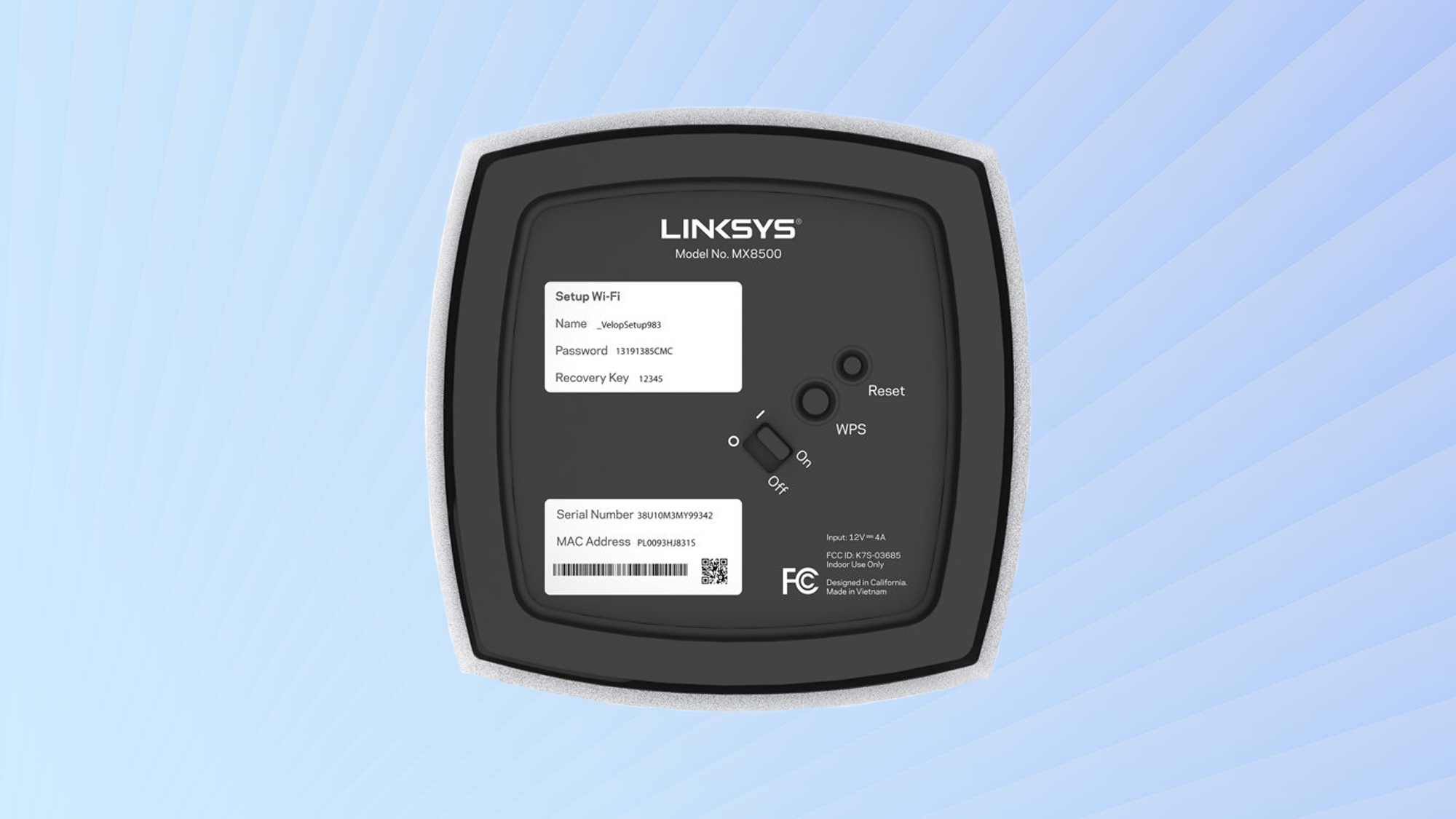
Underneath, the Atlas Max 6E has a power switch and reset button to return it to its factory-installed software. There’s also a key for starting the Wi-Fi Protected Setup (WPS) process for quickly adding a device.
Linksys Atlas Max 6E review: Features and capabilities
Built around Qualcomm’s Networking Pro 1210 chipset, the Atlas Max 6E isn’t as capable as the Orbi RBKE963, which uses the more advanced – and expensive – Networking Pro 1610 chip. It has 512MB of flash storage for its firmware and settings as well as 1GB of RAM available and is powered by a 2.2GHz quad core processor. Each Atlas Max 6E tower has 12 amplified antennas.
Able to accommodate up to 195 clients, the Atlas Max 6E’s tri-band design works with the 2.4-, 5- and 6GHz bands. Where the Orbi RBKE963 adds a second 5GHz network that’s dedicated to moving data from the satellites to the router, the Atlas Max 6E uses Linksys Velop Intelligent Mesh technology to dynamically optimize the traffic to and from the host router using whichever band is least congested, potentially streamlining data flow. The satellites can be wired to the host using Cat-6 cables to act as access points.
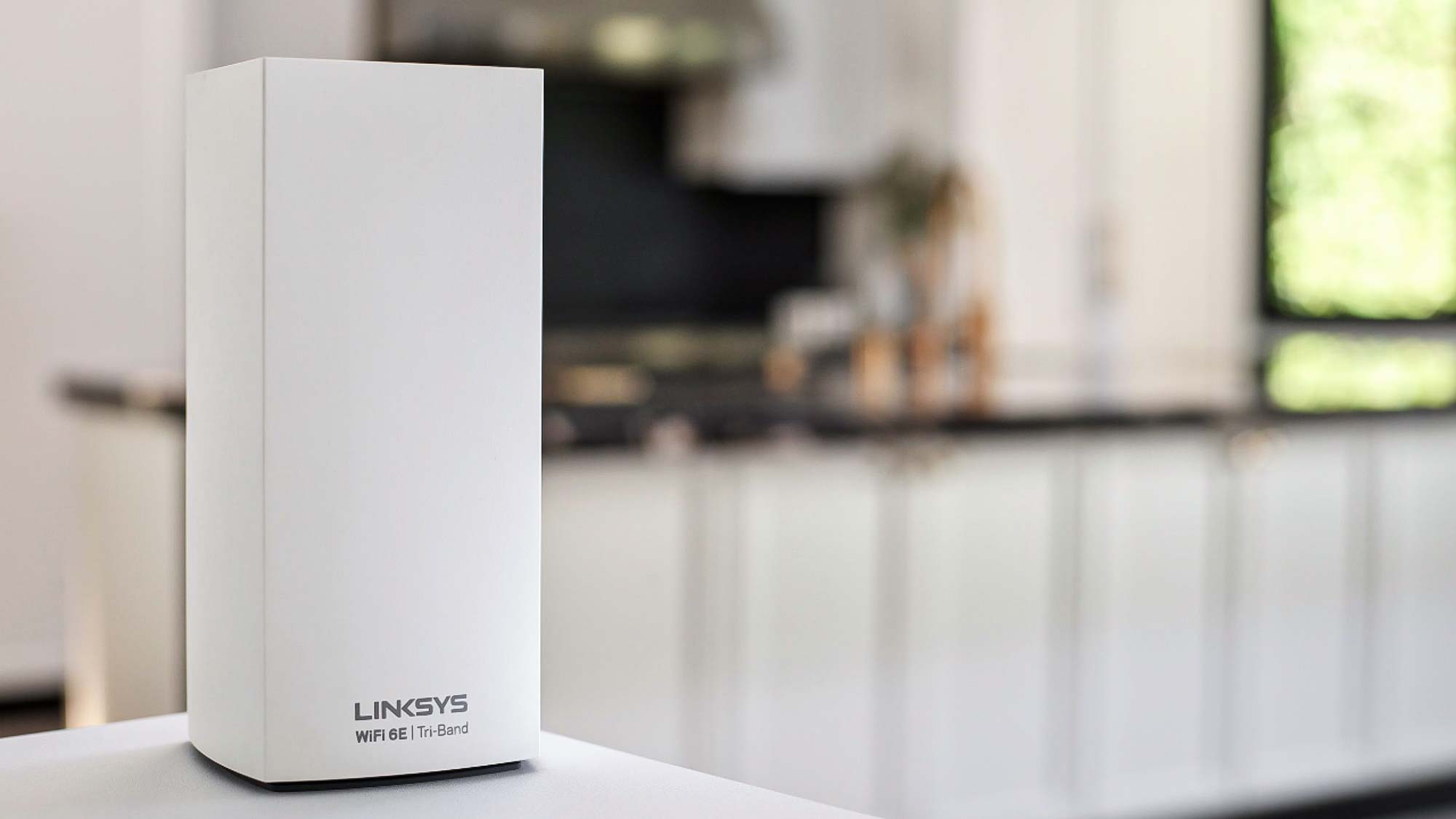
Capable of handling 12 independent streams of data, the Atlas Max 6E has the latest Wi-Fi 6E technology, including 4X4 MUMIMO transmissions to handle a lot of connected devices and beamforming to tailor the data to suit the receiver. Its Airtime Fairness streamlines operations and the Node and Client Steering route the data through the least used portions of the network. While its 2.4GHz band can move 1.2GHz of data and the 5GHz band delivers 2.4GHz of data, the high-performance 6GHz band can handle upwards of 4.8Gbps. It adds up to the potential to stream 8.4Gbps, well short of the Orbi RBKE963’s 16 independent data streams and a theoretical limit of 10.8Gbps.
For gamers and plain-old data hogs, the Atlas Max 6E can use seven ultra-wide 160MHz data channels in the high-performance 6GHz band so that those who demand the high data flow will get it without starving others at home of data. On the downside, the 6GHz band has a notoriously short range that works best in the same or adjacent room.
Linksys Atlas Max 6E review: Performance and in use
Over the course of two weeks of daily use, the Linksys Atlas Max 6E performed well and was a reliable data companion and more than enough to fill my 3,500-square-foot home with wireless data. Using Ixia’s IxChariot networking benchmark to simulate 10 data-hungry users and a Samsung Galaxy Book Pro to measure performance, the Atlas Max 6E blasted past the Orbi RBKE963 at close range.
| Header Cell - Column 0 | Linksys Atlas Max 6E | Netgear Orbi RBRE960 | Netgear Nighthawk RAXE500 |
|---|---|---|---|
| 15 feet | 1.189 Gbps | 1.009 Gbps | 2.396 Gbps |
| 50 feet | 382.2 Mbps | 190.5 Mbps | 215.8 Mbps |
| 75 feet | 50.6 Mbps | 93.4Mbps | 148.6 Mbps |
At 15 feet, the Atlas 6e router performed exceptionally well with the ability to move 1.189 Gbps of data to the receiving test device. That’s about a 15 percent performance premium over the 1.009 Gbps that the Netgear Orbi RBRE960 router was capable of. It also blew away Wi-Fi 6 mesh kits, like the Orbi RBK852 (at 883.6 Mbps), Arris Surfboard Max Pro (820.3 Mbps) and TP-Link Deco X20 (622.1 Mbps).
Impressive, yes, but the Atlas Max 6E provides less than half the throughput of the Netgear Nighthawk RAXE500 router, which was able to deliver a maximum of 2.396 Gbps of data at the same distance.
With 50-feet separating the router and the test notebook, the Atlas Max 6E kept its lead with the ability to move 382.2 Mbps. That’s just about double the 190.5 Mbps that the Orbi RBRE960 router was capable of and better than the TP-Link Deco X20’s 255.4 Mbps.
At a distance of 75 feet, the Atlas Max 6E’s throughput dropped dramatically to 50.6 Mbps. That’s about half of the 93.4Mbps that the Orbi RBRE960 router delivered and well behind the Deco X20’s 112.7 Mbps.
It was still online at our terminal distance of 90 feet but could only transfer 6.5 Mbps at that range. It had a range of 95-feet, showing it to be a mesh router that works in big houses, although it’s really only good for emails at the extremes.
The Atlas Max 6E excelled at sending a strong data signal through a wall that was 25 feet from the router, with the test system recording 1.008 Gbps. That’s almost double the 547.9 Mbps from the Orbi RBRE960, making the Atlas 6e the mesh router to get for a home with lots of walls. By contrast, the Wi-Fi 6-based RBK852 pushed a respectable 782.9 Mbps through the same wall.
After I set the first satellite up on a floor directly above the host router, the Atlas Max 6E delivered an adequate 102.7Mbps to the test machine that was set up 40 feet away. This puts it well behind the leaders, like the Wi-Fi 6-based Asus ZenWiFi AX (XT8) at389.3 Mbps and the Orbi RBKE963 at 163.4 Mbps.
I mirrored the upstairs test layout in the basement with the second node directly below the host router and the receiving system sitting 40-feet (12 meters) away. It registered 130.6 Mbps, second best compared to the RBKE963’s 410.0 Mbps. It all points to the Atlas Max 6E being better in long ranch homes than more vertical townhouses.
I used the Atlas Max 6E for close to two weeks of daily use filled with watching video, gaming and even some homework. The top of the router hit a peak of 103 degrees Fahrenheit. It easily passed my informal saturation test where I streamed 4K video to an iPad Pro while a Lenovo ThinkPad T470 played the BBC World Service news feed and an HP Dragonfly laptop played HD videos. All this was going on while an HP desktop PC swapped data with a RAID storage array. The audio and video came through without a skip, drop out or freeze up.
While being used, the Atlas 6e router consumed 20.7 watts of power and its satellites consumed 11.4 watts each; neither had a sleep mode. The entire network will cost an estimated $53 a year to operate if you pay the national average of 14 cents per kilowatt hour for electricity, a savings of $10 a year on power bills over the Orbi RBKE963, although it’s a drop in the bucket next to the $1,000 cost of the gear.
Linksys Atlas Max 6E review: Setup
Getting the Atlas Max 6E connected to the Internet and a slew of clients can be accomplished either using a connected browser or via the Linksys app. There are versions for Androids as well as iPhones and iPads.
Using the Android app on my Samsung Galaxy Note 20, the setup process was efficient with ample illustrations but the app’s interface limits use to portrait mode. All told, it took 17 minutes and 30 seconds — a couple minutes quicker than Netgear’s Orbi RBKE963 — to fill my home with data.
Linksys Atlas Max 6E review: Configuration
The Atlas Max 6E provided ample configuration and optimization options. The connected browser approach yielded more choices but it can take 10 or 15 seconds for the app or browser to fully connect with the router and fill in its data.
To start, the Linksys app’s Dashboard shows only what’s needed, including that the Internet is online next to how many devices are connected with the parental Controls and Guest Access below. It’s easy to see the status of the 2.4, 5 and 6GHz networks and a level down are the passwords that can be emailed or texted or copied for pasting.
The three horizontal line hamburger link in the upper left allows access to anything from Wi-Fi Settings for changing names or passwords. It’s not possible to separate them into three individual LANs, though.
Its Advanced Wi-Fi section is disappointing with only the type of encryption used and whether you want to use mixed mode operations for optimal compatibility. The standout feature here is the Channel Finder that scans for activity on the router’s available spectrum and optimizes the settings. It took about five minutes to perform its analysis and change the 2.4GHz channels for each node.
By contrast, a connected browser shows the same material on its dashboard. The parameters include online status, number of devices, Guest Access and Parental Controls. It goes a step further with a list of Tools on the left.
Its Security page is a good start for those afraid of getting hacked — and these days, who isn’t? It can help with Internet filters and control over the router’s firewall. The Atlas Max 6E lacks any extra security software, like Netgear’s Armor or TP-Link’s Home Care.
Turning to the Advanced Wi-Fi section is good for tuning the network with access to setting up Airtime Fairness, Client Steering and Node Steering. It stopped short of digging deeply into the router’s settings to adjust things like the CTS/RTS threshold and whether to use a long or short preamble. The Orbi RBKE963 allows the adjustment of these parameters.
Linksys has a slew of self help items on its Web site, including new firmware files, videos on how to set the gear up and troubleshooting assistance. Its technicians are available 24/7 to help get you out of a networking bind.
Linksys Atlas Max 6E review: Verdict
The Linksys Atlas Max 6E mesh kit is nothing short of the best performing mesh kit we’ve tested. Sure, it works best close up but the router does exceptionally well at sending a strong data signal through walls, pushing Netgear’s Orbi RBKE963 mesh kit aside as the top dog in whole home networking.
Easy to set up and configure, it lacks some high-end optimization techniques but should serve the average home networker well. While we wish it had extra security software, like Netgear’s Armor, there’s nothing extra to pay for and the networking kit comes with a three year warranty and lifetime support — something you might have to pay extra for with others.
If you crave having the hottest mesh router available and want to save a few bucks, the Linksys Atlas Max 6E is for you.
Brian Nadel is a freelance writer and editor who specializes in technology reporting and reviewing. He works out of the suburban New York City area and has covered topics from nuclear power plants and Wi-Fi routers to cars and tablets. The former editor-in-chief of Mobile Computing and Communications, Nadel is the recipient of the TransPacific Writing Award.

